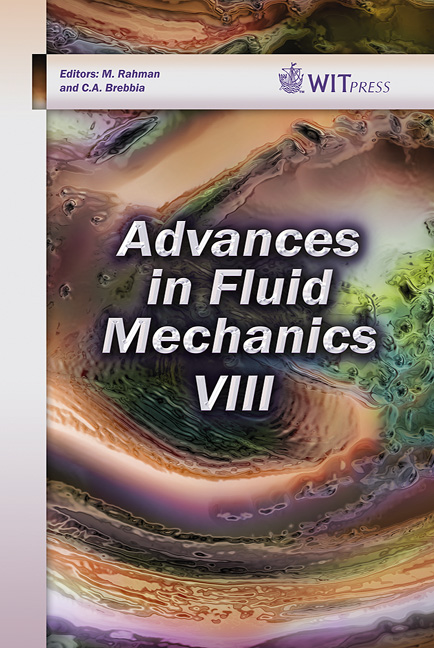Fluid–structure Simulation Of A Viscoelastic Hydrofoil Subjected To Quasi-steady Flow
Price
Free (open access)
Transaction
Volume
69
Pages
9
Page Range
439 - 447
Published
2010
Size
1,368 kb
Paper DOI
10.2495/AFM100381
Copyright
WIT Press
Author(s)
R. L. Campbell, E. G. Paterson, M. C. Reese & S. A. Hambric
Abstract
Fluid–structure interaction simulations are performed for a flexible hydrofoil subjected to quasi-steady flow conditions. The hydrofoil is fabricated from a polymeric material that exhibits viscoelastic effects, causing the hydrofoil to change shape while subjected to the fluid loads. The time-dependent deformations and loads will be compared in the future to empirical results from upcoming water tunnel tests. The fluid–structure interaction simulations are performed using a tightly coupled partitioned approach, with OpenFOAM as the flow solver and a finite element solver for the structural response. The codes are coupled using a fixed-point iteration with relaxation. The flow is modeled as laminar and quasisteady. Simulations indicate the hydrofoil angle of attack (AOA) changes from zero to a negative value as the material relaxes. The approach used here is being developed for application to a blood pump that has a performance closely tied to blade deformation through the impeller tip clearance. Keywords: fluid–structure interaction, viscoelasticity, hydrofoil, OpenFOAM. 1 Introduction The area of fluid–structure interaction (FSI) modeling has been very active in recent years, as evidenced by the numerous papers in the literature (see, for example, the review by Tezduyar and Sathe [1]). The dramatic advances in affordable computational resources coupled with improved modeling capability for both fluid and solid structures over the past two decades have made feasible coupled fluid/solid simulations for real-world engineering applications. While FSI simulations have been an area of research since the late 1970s (see Felippa et al. [2]), there still exist several challenges before these simulations will be
Keywords
fluid–structure interaction, viscoelasticity, hydrofoil, OpenFOAM





